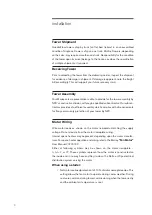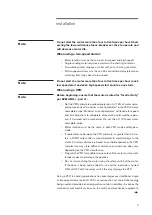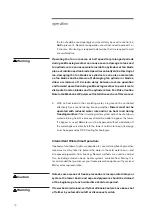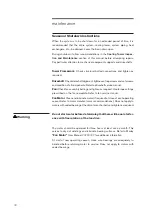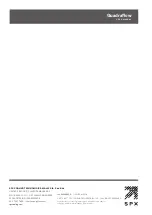
10
operation
7. While operating the condensing water pump(s) and prior to operating the
cooling tower fan, execute one of the two alternative biocidal treatment
programs described in the following:
• Resume treatment with the biocide which had been used prior to shut-
down. Utilize the services of the water treatment supplier. Maintain the
maximum recommended biocide residual (for the specific biocide) for
a sufficient period of time (residual and time will vary with the biocide)
to bring the system under good biological control
or
• Treat the system with sodium hypochlorite to a level of 4 to 5 mg/L
free chlorine residual at a pH of 7.0 to 7.6. The chlorine residual must
be held at 4 to 5 mg/L for six hours, measurable with standard com-
mercial water test kits.
If the cooling tower has been in operation and then shut down for a duration
of time and not drained, perform one of the two previous biocidal treatment
programs directly to the cooling water storage vessel (cooling tower sump,
drain down tank, etc.) without circulating stagnant water over the cooling
tower fill or operating the cooling tower fan.
After biocidal pretreatment has been successfully completed, cooling water
may be circulated over the tower fill with the fan off.
When biocidal treatment has been maintained at a satisfactory level for at
least six hours, the fan may be turned on and the system returned to service.
Resume the standard water treatment program, including biocidal treatment.
Freezing Weather Operation
The Marley fill system used in the Quadraflow has air entrance louvers that
are molded as an integral part of the fill. This feature makes these towers very
forgiving of cold weather operation, even at the low temperature and reduced
load conditions encountered in free cooling and other low temperature applica-
tions. Nevertheless, during operation in subfreezing weather the opportunity
exists for ice to form in the colder regions of the tower.
Slushy, transitory ice forms routinely in the colder regions of the fill
of low temperature towers, and is visible through the tower louvers.
Such ice normally has no adverse effect on tower operation, but
its appearance should be a signal to the operator to undertake ice
control procedures.
Note




